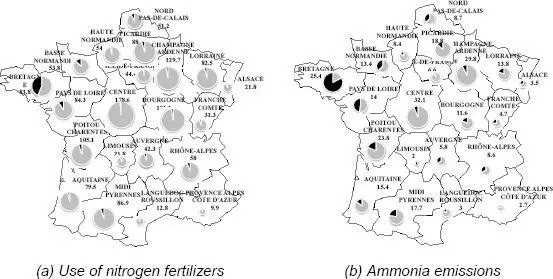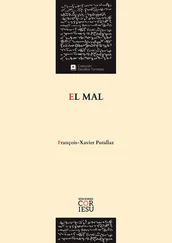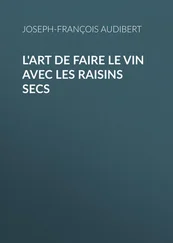“Formed from organic nitrogen, ammonia is a pollutant of the air, and after deposition, of soils and water. About 95% of anthropogenic ammonia (present in the environment through human action) comes from agriculture.
My work on the formation and volatilization of this compound is based on data measuring its concentrations in plants, water or soil. These are complemented by models of the physical, physico-chemical and biological processes at different scales”.
The platform developed because of the work carried out over more than 20 years by various research teams is initially dedicated to liquid organic manure. Its functionalities are extended in order to apply the modeling to mineral fertilizers [CAD 04] and thicker organic fertilizers [GAR 12], and to study pollution due to the use of certain plant protection products [BED 09]. It is also used to assess the consequences of certain livestock practices – which are also responsible for high nitrogen emissions [SMI 09].
Models are carried out for a plot, a small agricultural region, a country, or even, in the long term, a continent! They take into account the various factors that influence the migration of ammoniacal nitrogen in the environment – and exploit the data that make it possible to characterize it: meteorological, geological variables for the composition of surface soils, physical and chemical variables for the composition of fertilizers, statistics for the input practices carried out by farmers.
“The simulations consist in solving equations modeling the physical, physicochemical and biological phenomena at work in soils, and at the interface between the soil and the atmosphere. Carried out on a plot scale, they give very fast results: a few seconds of calculation give an idea of the evolution of the phenomena that can actually be observed over a few weeks and this at an hourly time step!”
Box 1.1. Physicochemical equations
Many physical processes are modeled by equations that form the basis of the models used in the simulations of changes in chemical species concentrations. These include the laws established in the 19th Century by the French physicist Jean-Baptiste Biot (1774–1862), the French engineer Henry Darcy (1803–1858) and the German physiologist Adolf Fick (1829–1901). They relate the flow of a physical quantity to a variation of another quantity:
– the law described by Fourier and formulated by Biot reflects the diffusion of heat. It is written as follows φ = –λ∇T and stipulates that the heat flux (φ) flows from hot areas to cold areas (∇T), all the more easily as the medium in question is conductive (λ);
– Darcy’s law expresses the flow rate of an incompressible fluid filtering through a porous medium. It is written as follows φ = K∇H and indicates that the flow of a fluid between two points, made by its flow (φ), is all the easier as the medium is porous (K) and that the resistance to its flow, expressed by the hydraulic pressure losses (∇H), is low;
– Fick’s law accounts for the diffusion of matter. It is written as follows φ = –ρD∇c and indicates that a chemical species spreads from areas where it is highly concentrated to areas where it is less concentrated. The mass flow of a component (φ) is inversely proportional to changes in its concentration (∇c) and depends on its density (ρ) and its propensity to spread (D).
The calculation algorithms consist of solving these equations, to which are added, on the one hand, those of the physicochemical equilibria between the different species in play present in the gaseous, aqueous state, or adsorbed on clays and organic matter of the soil (highly dependent on temperature, soil moisture and its acidity), and, on the other hand, those making consumption and/or production effects by biological reactions linked to the presence of microorganisms. Physicochemical models make it possible to calculate the evolution of chemical concentrations in the different soil layers, and in particular at the surface. Volatilization is then calculated by using equations describing the convection and diffusion effects of gaseous ammonia from the ground surface to the atmosphere based on the effects of wind conditions and stability of the lower atmospheric layers.
A set of simulations, aggregated for different plots and taking into account composition differences as well as meteorological factors, allows data to be reproduced on larger scales – typically a small agricultural region.
“It is possible to scale up, for a country, with the same principle: by performing as many simulations as necessary to describe an entire region and synthesize the results of the calculations. No less than 150,000 simulations are needed to represent the use of mineral and organic fertilizers during the soil fertilization phase (in the fall and then from February to late spring) and estimate their effects on the scale of a country like France. Two days of calculation on about forty cores are necessary to realize it!”.

Figure 1.16. From the use of nitrogen fertilizers to ammonia emissions in France [HAM 14]
COMMENT ON FIGURE 1.16.– The figure on the left represents the quantities of nitrogen used in agriculture in France during the 2005–2006 crop year in the form of ammonia and urea and therefore susceptible to volatilization (the values are expressed in thousands of tons of ammoniacal nitrogen). The figure on the right shows the resulting ammonia emissions (values are expressed in thousands of tons of ammonia, NH3). The choice is made here to present the results of the calculations for the entire season, according to the different regions of the country and for the two main categories of fertilizers: synthetic fertilizers (in gray) and organic waste products (in black) .
The difficulty of the calculation lies in the reliability of the data required to inform the model: composition of the fertilizers used, types of fertilized soil, crop species and the fertilization routes preferred by farmers, including dates, doses and forms of fertilizer applied and methods of application.
“Simulations allow us to identify interesting trends. Their quality depends very much on the quality of the data on which they are based. Soil type, range of inputs, emission data and field surveys are the preferred sources for researchers to inform their models. The validation of the calculations continues to pose problems: although the simulations are able to report the concentration of ammonia in the air with good spatial and temporal resolution, we do not currently have such an accurate measurement network to directly compare the results of our calculations with field observations – this is a current area of research involving different teams in France”.
The researchers’ calculations tend to reflect the variability of the situations encountered through sensitivity studies: their analyses are being refined and are providing decision-makers with tangible evidence for assessing the risks associated with the massive use of fertilizers and, in the near future, phyto-pharmaceuticals.
NOTE.– At the heart of the matter to understand soil chemistry .
For the American physicist Richard Feynman (1918–1988), simulating the world asks us to account for the mechanics of the infinitely small: “Nature isn’t classical, damnit, and if you want to make a simulation of nature, you’d better make it quantum mechanical, and by golly it’s a wonderful problem, because it doesn’t look so easy” (quoted by [BAI 16]). This idea was followed by two researchers in theoretical physico-chemistry, Fabienne Bessac and Sophie Hoyau, in order to study the mechanisms of pollutant adsorption in soils [BEL 17a, BEL 17b]:
Читать дальше













